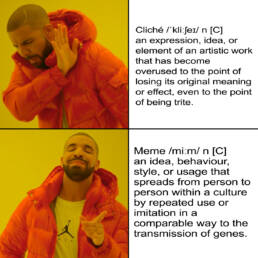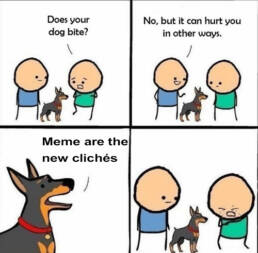When the zincographic matrix was invented in 1851 by Firmin Gillot, the world was going through the years of the second industrial revolution and the mass production. One century before, the society of that epoch did not require any large circulation of graphic productions; one century after the world wide web was going to be invented, making content accessible by anyone with an internet connection. Since then, the number of virtual content has grown up enormously and the question we have to ask ourselves is “what is the real value of a IG post, if I see thousands of them every day, each one for less than a second?”
In the same way, a cliché, in his figuratively meant, can only exist in relation to dynamics within society. It requires the existence of globalized society, but at the same time a long enough period to crystallize in popular culture. The hypermodern society in which we live devours everything too fast to allow the establishment of new clichés. An expression, idea or a behaviour does not have time to crystallize before something new comes out and overlook it. In nothing less than an evolutionary process, the weakest will become extinct while the one that will be able to mutate and adapt will survive. Welcome to the era of meme.
Cliché /ˈkliːʃeɪ/ n [C] an expression, idea, or element of an artistic work that has become overused to the point of losing its original meaning or effect, even to the point of being trite.
Meme /miːm/ n [C] an idea, behaviour, style, or usage that spreads from person to person within a culture by repeated use or imitation in a comparable way to the transmission of genes.
Pictures credit: imgflip
Francesco Burlando
PhD student in HRI Design. Longing for a world made of two billion people and a decimal time system. Self-centered, narcissist, megalomaniac, touchy and maniacal… but he also has flaws.
On Instagram: @cipo_final123ok.psd





